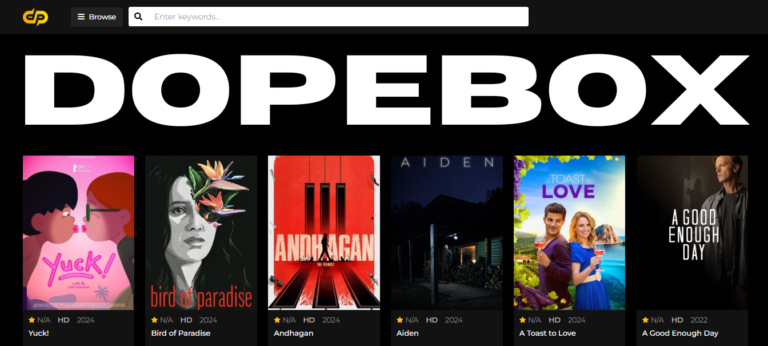
Have you ever found yourself wanting more—whether it’s more success, more love, or more stuff? The concept of “More” is ingrained in our daily lives. From our personal goals to our societal values, we are constantly driven by the desire for more. But what does this desire really mean? Does more always lead to better? Or can it sometimes take a toll on our well-being?
We’ll explore the many facets of “More” A Sign of Affection Chapter 3 a powerful and how it impacts our lives. From ambition to burnout, from relationships to consumerism, we’ll take a deep dive into why we crave more and the consequences that come with it.
The Power of Desire for ‘More’ A Sign of Affection Chapter 3
We’ve all heard the saying, “The sky’s the limit,” and that captures the essence of the human desire for “More.” Whether we’re working hard to achieve a personal goal or pushing the boundaries of what’s possible in our professional lives, the drive for more can be incredibly motivating. It’s the force behind our ambition, the energy that pushes us to take on new challenges and pursue bigger dreams.
From early childhood, we’re conditioned to want more—more toys, more friends, more knowledge. As adults, this desire often turns into a quest for more money, more success, and more recognition. But why is this such a powerful motivator? Simply put, it taps into our need for growth, achievement, and progress. When we achieve “More,” it provides a sense of accomplishment and self-worth, reinforcing the idea that we’re moving forward.
Is ‘More’ Always Better?
While striving for “More” can lead to personal growth and success, it’s not always a path to happiness or fulfilment. The pursuit of more can easily become an obsession, leading us to a place where “More” no longer feels like an exciting goal, but rather an insatiable need.
Take, for example, the world of work. We often hear about individuals who chase after promotions, bigger salaries, or higher status, only to find that when they reach their goals, they still feel unfulfilled. This is the danger of excess. When the pursuit of more becomes an endless cycle, it can lead to burnout, stress, and dissatisfaction.
So, when does “More” become too much? The answer lies in balance. It’s important to ask yourself: “Am I pursuing more because I truly want it, or am I trying to fill a void?”
The Role of ‘More’ in Achieving Success
On the flip side, “More” can be the catalyst for achieving great success. It’s often the extra effort, the additional push, or the willingness to go above and beyond that leads to breakthroughs. Many successful entrepreneurs, athletes, and innovators have achieved greatness because they were driven by a desire for more—more knowledge, more experience, more impact.
This drive for more fosters growth, learning, and creativity. It keeps us from stagnating and helps us to continuously improve. The key, however, is to direct that desire in a healthy way that aligns with your personal values and goals.
The Dark Side of ‘More’: Overconsumption and Burnout
While striving for more can propel us forward, it can also have negative consequences when taken too far. Overconsumption, whether it’s of time, money, or resources, can lead to burnout. The modern world is set up for us to consume more—whether it’s in the form of material goods or digital content. However, this excess often leaves us feeling drained and dissatisfied.
Burnout is another danger of constantly pushing for more. Overworking, trying to meet impossible expectations, and the constant race to be the best can wear us down physically, emotionally, and mentally. In the end, we might find that the pursuit of more has cost us our well-being and happiness.
More in Relationships: How Much Is Too Much?
In relationships, the concept of “More” plays a different role. We often hear that we need to give more of ourselves to others—to be more attentive, more caring, and more understanding. But is there such a thing as too much? When does our desire to give “More” in relationships become self-sacrifice or even enable unhealthy dynamics?
Healthy relationships are based on a balance of giving and receiving. If we constantly give more without taking time to care for ourselves, it can lead to resentment, burnout, and emotional exhaustion. On the other hand, relationships built on mutual respect and understanding of each other’s boundaries can thrive, with “More” being a healthy exchange rather than an obligation.
The Pursuit of ‘More’ in Personal Development

Personal development is one area where the desire for “More” is often encouraged. Books, seminars, and self-help gurus all push the idea that you should always strive for more—more knowledge, more skills, more success. But does this constant striving leave room for contentment and self-acceptance?
The key here is to balance the pursuit of personal growth with the recognition that you are already enough. It’s great to strive for more in terms of self-improvement, but it’s equally important to appreciate where you are right now in your journey.
More in Technology and Innovation
When it comes to technology, the quest for “More” has driven some of the greatest innovations of our time. The desire for faster, better, and more efficient solutions fuels technological advancements that change the world. From smartphones to space exploration, “More” is the engine behind cutting-edge inventions.
Yet, this constant drive for technological innovation also raises questions about sustainability and the impact of rapid advancements on society. How much is too much? And at what point does the drive for technological progress begin to outweigh the ethical considerations?
Cultural Perspectives on ‘More’
Different cultures have different perspectives on the idea of “More.” In some societies, the pursuit of more is seen as a reflection of hard work and success, while in others, contentment with what you have is valued over striving for excess. The Western world, for instance, often emphasise individual achievement and wealth accumulation, while many Eastern cultures may place a greater emphasis on spiritual fulfilment and balance.
These varying cultural attitudes towards “More” can shape how we view success and happiness. The pursuit of excess may lead to a sense of inadequacy or dissatisfaction in one culture, while it may be celebrated as a symbol of progress in another.
Finding Balance: How to Embrace ‘More’ Without Losing Yourself
Achieving balance in the pursuit of more is crucial. It’s possible to embrace the idea of striving for more—whether it’s in your career, relationships, or personal growth—without losing sight of what truly matters. Setting boundaries, practising mindfulness, and recognizing when enough is enough are all essential steps in finding that balance.
It’s important to understand that you don’t have to chase after everything, and not everything needs to be bigger, faster, or better. By focusing on what’s truly important to you and letting go of the pressure to always do more, you can live a life that’s both fulfilled and sustainable.
The Relationship Between ‘More’ and Happiness
Does more lead to happiness? It’s a common misconception that acquiring more things or achieving more goals will bring lasting happiness. In reality, the pursuit of more can often lead to the opposite—a feeling of emptiness or dissatisfaction. The paradox of “More” is that it can sometimes make us feel like we never have enough, even when we’ve gained everything we thought we wanted.
Happiness doesn’t lie in the accumulation of more; it lies in finding contentment in the present moment. It’s about appreciating what you have while still striving for growth and improvement.
The Role of ‘More’ in Business and the Economy
In the world of business, “More” is the driving force behind expansion and profit. Companies are constantly looking for ways to increase revenue, reach new customers, and grow their market share. The economy itself thrives on the concept of “More”—the desire for more goods, services, and innovation fuels progress and job creation.
However, this relentless push for more can also lead to overproduction, environmental degradation, and income inequality. The key is to balance the pursuit of growth with sustainability and ethical considerations.
‘More’ as a Social Construct: How Society Shapes Our Perception
Society plays a significant role in shaping our desire for more. From advertisements to social media, we are constantly exposed to messages that tell us we need more to be happy, successful, or valued. This societal pressure can create unrealistic expectations and a sense of inadequacy when we feel like we don’t measure up.
Understanding that the pursuit of more is often a social construct can help us free ourselves from the constant pressure to chase after excess. We can begin to define success and happiness on our own terms, rather than conforming to societal standards.
The Psychological Impact of ‘More’
The constant pursuit of more can have a profound impact on our mental health. Anxiety, stress, and depression are often linked to the pressure to achieve more—whether it’s in our personal lives, careers, or social circles. Understanding the psychological impact of “More” can help us make more mindful decisions about what we really need in order to feel fulfilled.
Sometimes, less truly is more. Taking time to pause, reflect, and appreciate what we have can have a profound impact on our mental well-being.
Conclusion
The pursuit of “More” is A Sign of Affection Chapter 3 a powerful force in our lives. It motivates us to grow, achieve, and improve, but it can also lead to burnout, dissatisfaction, and an endless chase for something that may not bring happiness. By finding a balance between ambition and contentment, we can embrace “More” in a way that enriches our lives without sacrificing our well-being.
The key is to recognize that while striving for more is natural, it’s equally important to appreciate what we have and focus on the things that truly bring joy and fulfilment.
FAQs About A Sign of Affection Chapter 3 a powerful
1. Is the desire for ‘More’ always a negative thing?
No, the desire for more can be a powerful motivator for personal growth, success, and innovation. The key is to ensure that the pursuit of more doesn’t lead to burnout or discontentment.
2. How can I find balance in my pursuit of ‘More’?
Finding balance involves setting realistic goals, being mindful of your limits, and recognizing when you have enough. It’s important to enjoy the journey without constantly striving for the next thing.
3. Does ‘More’ always lead to happiness?
Not necessarily. While achieving more can bring temporary satisfaction, true happiness often comes from contentment, gratitude, and meaningful relationships, not from accumulating more.
4. How can I overcome the societal pressure to always achieve ‘More’?
By focusing on your own values, setting personal goals, and avoiding comparisons to others, you can free yourself from the pressure to conform to societal expectations.
5. What impact does the pursuit of ‘More’ have on mental health?
Constantly striving for more can lead to stress, anxiety, and burnout. It’s important to recognize when the pursuit of more becomes overwhelming and take time to care for your mental well-being.







